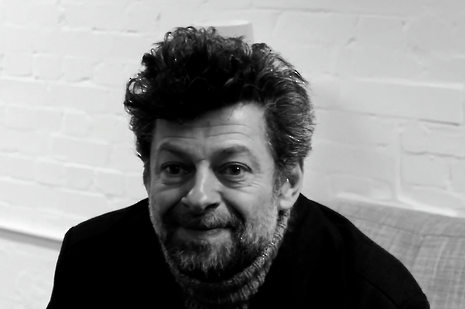Interview with Andy Serkis
In the first of our interviews in association with Watersprite festival, Andy Serkis talks the Imaginarium, making it in the film industry and of course, Gollum

Everybody knows that the best screen actors are those said to completely and utterly inhabit the characters which they play. In this sense, Andy Serkis simply forms the latest in a lengthy tradition of role-inhabitors, devoting themselves to enacting a character’s mindset and movements down to the minutest detail. He stands out, however, in his devotion to what he calls the ‘art of performance capture technology’, an acting method he made famous with his inimitable portrayal of Gollum in The Lord of the Rings and, later, King Kong in Peter Jackson’s film of the same name.
Today, Andy has taken his groundbreaking work in the area of performance capture to form his Imaginarium at Ealing Studios, “a creative lab here in the UK that is really expressly built for furthering the art and craft of performance capture.” Funnily enough, the Imaginarium’s humble beginnings were in Cambridge, where, post- Kong, Andy directed some video games with local company Ninja Theory. “They were really creative and wanted to push the boundaries in terms of interactive storytelling and characterisation now we have the technology to support it.”
Boundaries were pushed, however, all the way back to the home of Gollum and his companions - a suitable studio for Serkis’s new projects could only be sourced in New Zealand. Thus, along with producer John Cavendish, Serkis built his ‘Imaginarium’, and the team finally had a creative, theatrical space in which they could develop their own material. Idealistically dubbed, the studio’s name reflect Serkis’ own sunny attitude to the future of motion and facial capture technology: “It’s a busy and exciting time”, he gushes, “I’ve worked with Performance Capture Technology for twelve years and it has come such a long way.” He is emphatic that their practice should be seen not as mere acting genre, however, but “another way of capturing an actor’s performance”: “Its another bunch of cameras – sure, they’re a million megapixels and incredibly expensive - but in terms of the acting process its no different.” But surely there is a difference between Andy Serkis as Gollum and Andy Serkis as, say, Ian Drury (a role for which Serkis was critically acclaimed)? Nope: “If I were to approach a live action character I wouldn’t approach it any differently.” According to Serkis, “that’s how one needs to perceive it now...and people in the industry are catching up with the punters.” And, with upcoming projects including a new film of George Orwell’s Animal Farm alongside other big budget video games and Hollywood blockbusters, his confidence may be justified.
I wonder what Serkis’ favourite part about working in the film industry might be - my own mental ‘Imaginarium’ (read: brain) producing answers only the die-hard Lord of The Rings fan could dream up (“Why, working with Merry and Pippin of course! What cheeky chaps!”). The man himself, however, sums it up in a single term: “the possibilities.” Again, his new venture takes precedent: “As the Imaginarium develops the film industry is only one part of what we’re doing. Its really the convergence of all these different disciplines – theatre, film, video games – and using this to tell engaging stories.”
If Serkis calls the world today “a wall to wall, visually complex and challenging environment”, then he certainly seems well placed to embrace that challenge. What clearly – and pleasantly - comes across in interview is that rather than cash in on his rising Hollywood capital via a more well-trodden road (more roles, a move from motion capture to ‘real’ characters) Serkis instead has a genuine passion for elevating those very technologies that got him to where he is today. More than this, however, the actor-turned-director has not lost sight of what is essential to good filmmaking. Often a judge on short film festivals, he dishes out advice not just from behind the computer screen, but beyond it too. “The technology’s there for everyone. There’s no excuse – you can shoot an entire movie on your iPhone! What it’s really about is completing things, finishing them. You need to be clear about the story it is you’re telling, and what you want to say about the human condition.”
On that note, our chat ends and its time for Andy to take to his ‘stage.’ Whether he was about to don the spandex or take the director’s chair was unclear, but one thing I felt sure of was that he’d thoroughly enjoy either.
To watch the video of the full interview, go to the Watersprite Festival website.
 News / News in Brief: Postgrad accom, prestigious prizes, and public support for policies11 January 2026
News / News in Brief: Postgrad accom, prestigious prizes, and public support for policies11 January 2026 Comment / Will the town and gown divide ever truly be resolved?12 January 2026
Comment / Will the town and gown divide ever truly be resolved?12 January 2026 Features / How sweet is the en-suite deal?13 January 2026
Features / How sweet is the en-suite deal?13 January 2026 News / 20 vet organisations sign letter backing Cam vet course13 January 2026
News / 20 vet organisations sign letter backing Cam vet course13 January 2026 Comment / Plastic pubs: the problem with Cambridge alehouses 5 January 2026
Comment / Plastic pubs: the problem with Cambridge alehouses 5 January 2026









